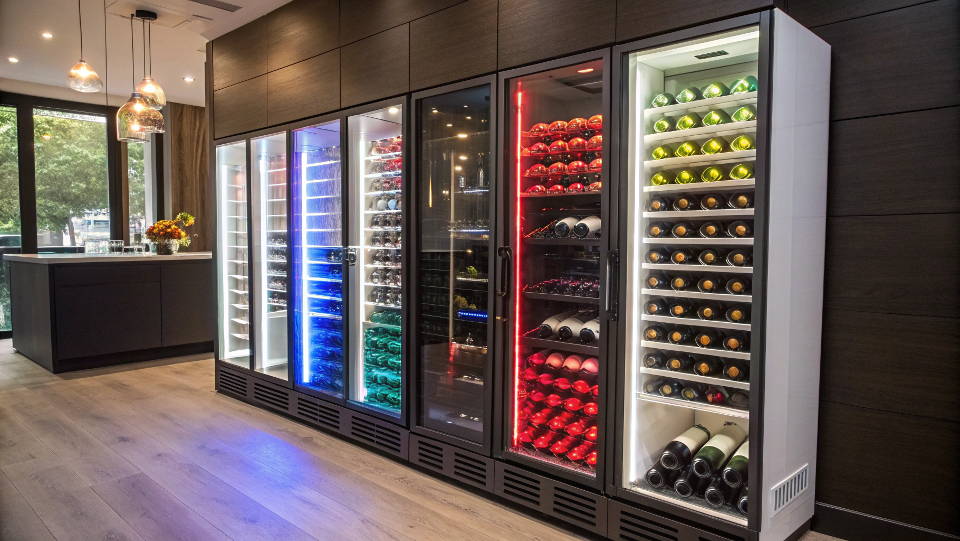Want a beautiful wine display but fear light will ruin your valuable collection? Traditional lights can be harmful and dull. RGB+W lighting offers safe, stunning, and customizable moods.
RGB+W lighting revolutionizes wine displays by offering millions of color options (RGB) plus a pure, clean white (W). This allows you to set any mood, from a vibrant party to a classic cellar look, all while using heat-free, UV-free LEDs that protect your wine collection.
The visual appeal is undeniable. But as a business owner like you, Alex, I know the first question is always about safety and quality. You're not just selling a look; you're selling the promise of perfectly preserved wine. Before we explore the full creative potential of RGB+W, let's address the fundamental concerns about light and wine. It's a topic I've discussed with countless clients over the years. Many worry if any light is too much, and it's a valid concern.
Does light affect wine storage?
Worried that the light in your wine cooler could be spoiling your collection? The wrong exposure can ruin a wine's flavor. Knowing the impact of light is crucial for proper storage.
Yes, light seriously affects wine. Sunlight and fluorescent lights emit UV rays that cause "light strike," creating bad smells and flavors. It prematurely ages the wine by breaking down its essential compounds, ruining the overall experience. Proper protection is not optional; it's essential.
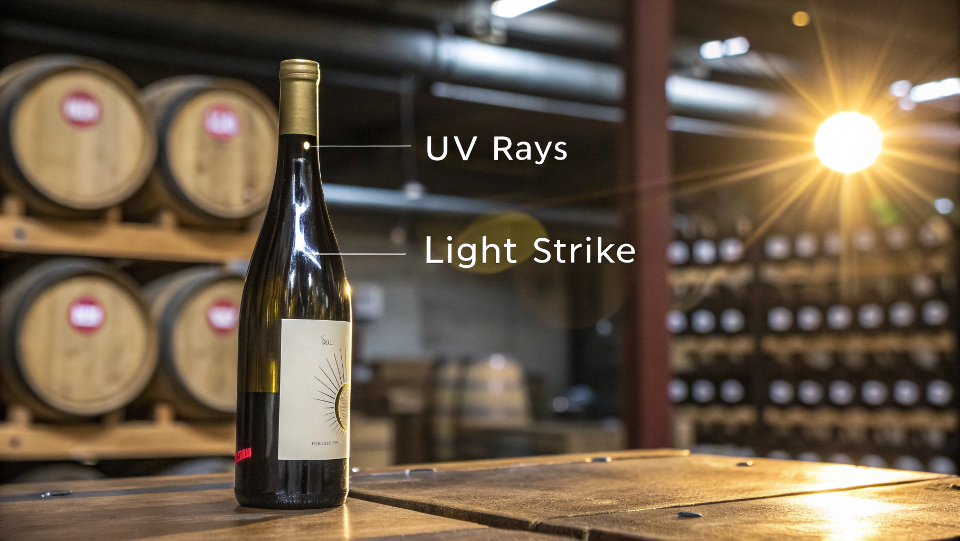
Light's impact on wine is a real chemical process called "light strike." Think of it as a sunburn for your wine. This happens mainly because of a vitamin in wine called riboflavin. When exposed to high-energy light, especially UV and blue light, riboflavin reacts. This reaction breaks down amino acids in the wine. The result is the formation of sulfur compounds that smell unpleasant, like cooked cabbage or wet wool. It completely masks the wine's delicate fruit aromas. Not all light is equally bad, though.
Light Source Comparison
The type of bottle also offers some protection. Darker glass, like amber or dark green, blocks much more harmful light than clear glass. This is why many red wines come in dark bottles. I've always advised clients that product design must consider this. A beautiful clear bottle might be great for marketing, but it requires even safer lighting to compensate.
| Light Source | UV Emission | Heat Emission | Risk to Wine |
|---|---|---|---|
| Sunlight | High | High | Very High |
| Fluorescent | Medium | Low | High |
| Incandescent | Low | High | Medium (Heat) |
| LED | Very Low | Very Low | Very Low |
How does UV light affect wine?
You know UV rays are bad for wine, but what exactly do they do? They silently trigger chemical reactions, destroying the very flavors and aromas that make wine special. Understanding this is key.
UV light is the main cause of wine damage from light. It excites a compound called riboflavin, which then degrades amino acids. This process creates smelly sulfur compounds, ruining the wine's aroma and flavor profile. It also breaks down tannins, affecting the wine's structure.
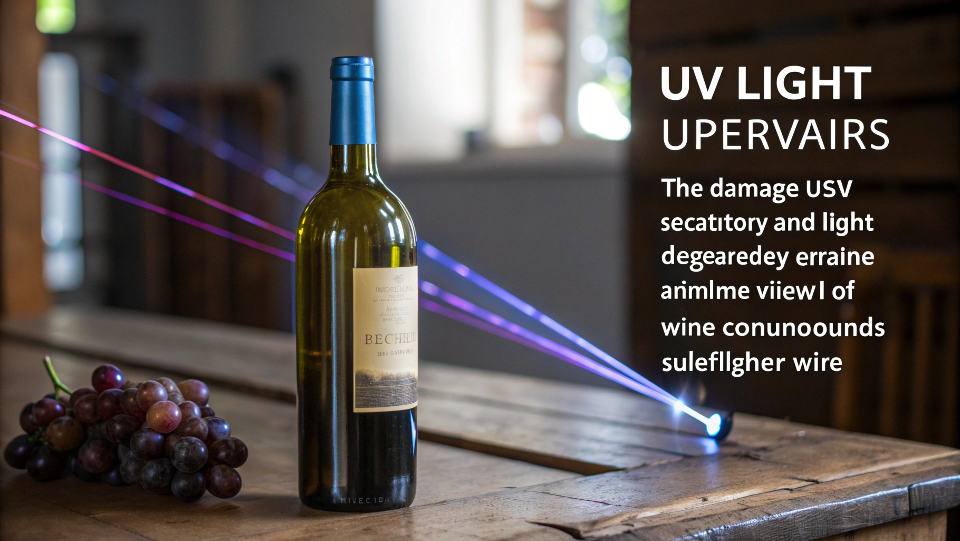
Let's get more specific about the damage UV light causes. It's not a vague threat; it's a specific chain reaction. I remember visiting a winery early in my career. The owner showed me two bottles from the same batch. One was stored in a dark cellar, the other left near a window for a few weeks. The difference was shocking. The one left in the light was pale and smelled awful.
The Cascade of Damage
UV light starts a process that attacks wine on multiple fronts. It's a domino effect that degrades quality from every angle.
- Aroma: As I mentioned, UV light creates sulfur compounds. This is the most immediate and noticeable damage. The wine loses its fruity notes and gains unpleasant smells.
- Color: UV radiation causes oxidation, which affects the wine's color. White wines can turn brownish. Red wines can lose their vibrant hues, looking dull and old.
- Tannins and Structure: Tannins give red wine its structure and ability to age. UV exposure breaks down these tannins. This makes the wine feel weak and accelerates aging in the worst way.
Essentially, UV light strips a wine of its identity. It turns a complex beverage into something flat and faulty. This is why UV-blocking glass and UV-free lighting are essential for any serious wine storage unit.
Is LED light ok for wine?
Want to light up your wine display without risking heat or UV damage? Traditional bulbs are a gamble, forcing a choice between looks and preservation. LED lights are the safe, cool solution.
Yes, LED light is excellent for wine. LEDs produce virtually no UV light and very little heat, the two main enemies of wine in storage. This makes them the safest option for illuminating cellars and wine coolers without risking damage to your collection.
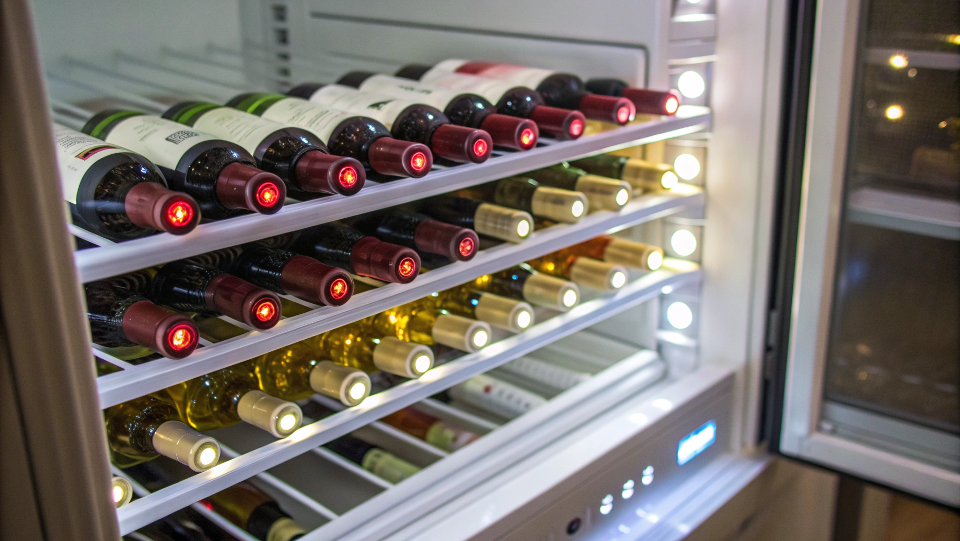
When I started my refrigerator factory, one of the first big changes we made was switching to LED lighting for our wine coolers. The difference was huge. Our clients, like you, Alex, were thrilled. They could finally showcase their inventory beautifully without worrying about cooking the wine with a hot bulb. It solved a long-standing problem.
Why LED is the Industry Standard
The move to LED wasn't just a trend. It was based on clear advantages that directly protect wine. Let's break down why they are the best choice.
| Feature | Benefit for Wine Storage |
|---|---|
| No UV Rays | Prevents "light strike" and the degradation of aroma and flavor. |
| Low Heat | Maintains a stable cellar temperature, preventing premature aging. |
| Long Lifespan | Reduces maintenance and the need to disturb the collection. |
| Energy Efficiency | Lowers operating costs, a key benefit for any business owner. |
| Design Flexibility | Allows creative solutions like RGB+W for better aesthetics. |
This combination of safety, efficiency, and design freedom is unmatched. Using anything else for modern wine storage is a compromise in quality. LEDs offer peace of mind, which is just as valuable as the wine itself.
Do wine cellars have to be dark?
Told that a proper wine cellar must be a dark, gloomy cave? This traditional view limits your ability to enjoy and showcase your collection. Modern lighting means you don't have to choose.
Traditionally, yes, to protect wine from harmful light. However, with modern UV-free, low-heat LED lighting, cellars no longer need to be pitch black. You can have a well-lit, beautiful space as long as the lighting is specifically designed to be wine-safe.
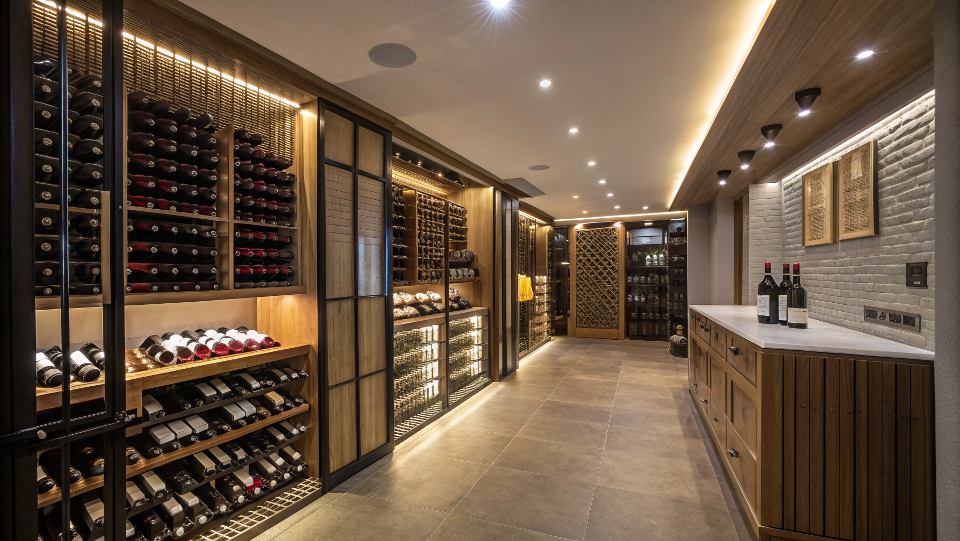
The classic image of a wine cellar is a dark, dusty cave. This was purely functional. Before modern technology, darkness was the only way to protect wine from damaging light. Keeping the lights off was the simplest strategy. But technology changes what's possible. I've helped clients design stunning displays that would have been unthinkable 30 years ago.
From Dark Caves to Modern Showcases
Today, you can respect the principle (protect wine) without following the old method (total darkness). The goal isn't darkness itself, but the absence of damaging light and heat. With the right tools, you can have a cellar that is both safe and beautifully lit.
Here's how to do it right:
- Use 100% LED Lighting: This is non-negotiable. It eliminates the risk of UV and excess heat at the source.
- Install Dimmers: This gives you complete control. You can keep the lights at a low level for general viewing and turn them up only when needed.
- Consider Motion Sensors: For ultimate protection, lights can turn on only when someone enters the cellar. This minimizes light exposure to the absolute necessary amount.
This approach transforms the cellar from a storage dungeon into a feature of the home or business. It becomes a place to be proud of and show to guests.
Conclusion
With RGB+W LED lighting, you get stunning aesthetics and total protection. It transforms wine storage from a simple function into a beautiful, safe, and customizable centerpiece for any space.

